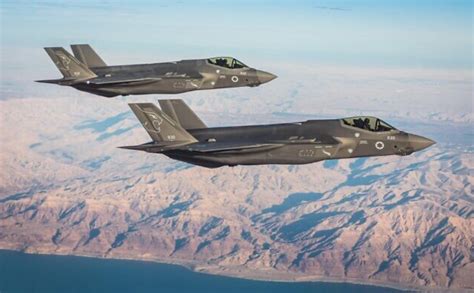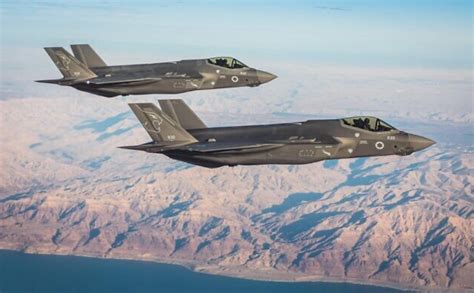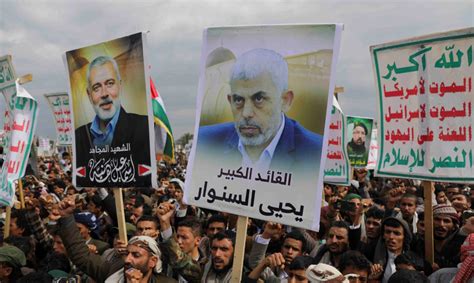
Iran’s state media is reporting that its air defenses successfully shot down an Israeli F-35 fighter jet, a claim Israel has not confirmed or commented on, raising tensions amid ongoing regional conflicts.
Iran Claims Downing Israeli F-35; Israel Silent
Iranian state media announced on Friday that its air defense systems had successfully downed an Israeli F-35 fighter jet, a claim that has been met with silence from Israeli military officials. The report, initially disseminated by Iran’s semi-official Mehr News Agency and subsequently carried by other state-affiliated outlets, cited unnamed sources asserting the downing occurred in response to recent Israeli aerial incursions. The alleged incident comes against a backdrop of heightened tensions between the two nations, punctuated by frequent accusations of espionage and military actions.
The Iranian announcement, which lacked visual evidence such as wreckage or identifiable debris from the alleged downed aircraft, has been met with skepticism from international observers. The Israeli Defense Forces (IDF) have maintained a strict policy of neither confirming nor denying operational activities in the region, further fueling speculation. This silence has left analysts and geopolitical experts to grapple with the veracity of the claim and its potential implications for regional stability.
“The details surrounding the alleged downing of the Israeli F-35 are murky,” stated Dr. Emily Landau, a senior research fellow at the Institute for National Security Studies in Tel Aviv, “Without corroborating evidence from independent sources or a statement from the Israeli military, it’s difficult to assess the credibility of the Iranian report.”
The reported incident occurs within a broader context of escalating tensions and indirect confrontations between Iran and Israel. Both nations have been engaged in a shadow war, which includes cyberattacks, maritime incidents, and alleged assassinations of key figures. Israel has repeatedly stated its commitment to preventing Iran from developing nuclear weapons and has conducted numerous airstrikes targeting Iranian-linked assets in Syria and other neighboring countries. Iran, in turn, has accused Israel of supporting separatist movements within its borders and of being responsible for several attacks on its nuclear facilities and military installations.
“This latest claim could be interpreted as a strategic message from Iran,” explained Professor Ali Rezaei, a Middle East security expert at Tehran University, “It signals Iran’s willingness to defend its airspace against perceived aggression and demonstrates its improving air defense capabilities.” However, Professor Rezaei also cautioned that the lack of transparency and the unconfirmed nature of the report could exacerbate regional instability and lead to further miscalculations.
The F-35 Lightning II, manufactured by Lockheed Martin, is considered one of the most advanced fighter jets in the world. It boasts stealth capabilities, advanced sensors, and a high degree of maneuverability. Israel has been one of the first countries outside the United States to acquire the F-35, and it has been a key component of its air force since its delivery. The loss of such an advanced asset would represent a significant blow to Israel’s military capabilities and prestige.
If confirmed, the downing of an F-35 would mark a significant escalation in the ongoing conflict between Iran and Israel. It could trigger a retaliatory response from Israel, potentially leading to a wider conflict. The incident also raises serious questions about the effectiveness of the F-35’s stealth technology against Iranian air defenses and the overall balance of power in the region.
The incident highlights the increasingly complex and volatile nature of the Middle East security landscape. The proliferation of advanced weapons systems, combined with the deep-seated animosity between regional actors, creates a dangerous environment where miscalculations and escalations can occur rapidly. International efforts to de-escalate tensions and promote dialogue are crucial to preventing further conflict and maintaining stability in the region.
The coming days will be critical in determining the truth behind the Iranian claim and its potential consequences. The international community will be closely monitoring the situation, urging restraint and seeking to prevent further escalation.
Background of Iran-Israel Tensions:
The relationship between Iran and Israel has been fraught with tension and animosity since the 1979 Islamic Revolution in Iran. Prior to the revolution, Iran and Israel maintained close ties, including cooperation in areas such as intelligence and security. However, the new Iranian regime, led by Ayatollah Ruhollah Khomeini, adopted a staunchly anti-Zionist stance and severed all diplomatic relations with Israel.
Since then, Iran has consistently opposed Israel’s existence and has supported various militant groups, such as Hezbollah in Lebanon and Hamas in Gaza, that are committed to Israel’s destruction. Iran has also been accused of providing financial and military support to Palestinian groups involved in attacks against Israel.
Israel, in turn, views Iran as a major threat to its security, citing Iran’s nuclear program, its ballistic missile development, and its support for anti-Israel militant groups. Israel has repeatedly threatened to take military action to prevent Iran from acquiring nuclear weapons, and it has been linked to several covert operations aimed at disrupting Iran’s nuclear program.
The two countries have engaged in a shadow war, which includes cyberattacks, maritime incidents, and alleged assassinations of key figures. In recent years, tensions have escalated further due to Iran’s growing influence in Syria and other countries in the region, as well as Israel’s increased military activity in Syria targeting Iranian-linked assets.
The Significance of the F-35:
The F-35 Lightning II is a fifth-generation, multirole fighter jet developed by Lockheed Martin. It is considered one of the most advanced fighter jets in the world, boasting stealth capabilities, advanced sensors, and a high degree of maneuverability.
The F-35 is designed to be a highly versatile aircraft capable of performing a wide range of missions, including air-to-air combat, air-to-ground attacks, intelligence gathering, and electronic warfare. Its stealth technology makes it difficult to detect by radar, allowing it to penetrate enemy airspace and strike targets with minimal risk.
Israel was one of the first countries outside the United States to acquire the F-35, and it has been a key component of its air force since its delivery. The F-35 has been used in several operational missions, including airstrikes in Syria and other countries in the region.
The loss of an F-35 would represent a significant blow to Israel’s military capabilities and prestige. It would also raise serious questions about the effectiveness of the F-35’s stealth technology against Iranian air defenses and the overall balance of power in the region.
Implications for Regional Stability:
The alleged downing of an Israeli F-35 fighter jet could have significant implications for regional stability. If confirmed, it would mark a major escalation in the ongoing conflict between Iran and Israel, potentially leading to a wider conflict.
The incident could also embolden other actors in the region, such as Hezbollah and Hamas, to take more aggressive actions against Israel. It could also lead to increased tensions between Iran and other countries in the region, such as Saudi Arabia and the United Arab Emirates, which view Iran as a destabilizing force.
The international community will be closely monitoring the situation, urging restraint and seeking to prevent further escalation. However, the deep-seated animosity between Iran and Israel, combined with the complex and volatile nature of the Middle East security landscape, makes it difficult to predict how the situation will unfold.
Expert Analysis:
“The claim that Iran has shot down an Israeli F-35 should be treated with caution until verified by independent sources,” said Bilal Saab, a senior fellow at the Middle East Institute in Washington, D.C. “Iran has a history of making exaggerated claims about its military capabilities. However, if the claim is true, it would represent a significant development with potentially serious implications for regional security.”
“The incident highlights the growing sophistication of Iran’s air defenses,” said Michael Knights, a fellow at the Washington Institute for Near East Policy. “Iran has invested heavily in upgrading its air defense systems in recent years, and it now possesses a range of advanced radar and missile systems. This makes it more difficult for Israel and other countries to conduct airstrikes against Iranian targets.”
“The silence from Israel is not surprising,” said Amos Yadlin, the former head of Israeli military intelligence. “Israel typically does not comment on operational activities in the region. However, the silence could also be an indication that the claim is being taken seriously and that Israel is assessing its options.”
Potential Scenarios:
Several scenarios could unfold in the coming days and weeks:
- De-escalation: Israel and Iran could exercise restraint and avoid further escalation. This scenario is unlikely given the deep-seated animosity between the two countries.
- Limited Retaliation: Israel could launch a limited retaliatory strike against Iranian targets in Syria or other countries in the region. This scenario is more likely than a full-scale war.
- Escalation to War: The incident could trigger a full-scale war between Iran and Israel. This scenario is less likely but cannot be ruled out.
- International Mediation: International actors, such as the United States, Russia, and the European Union, could step in to mediate between Iran and Israel and prevent further escalation.
International Reactions:
The international community has reacted with caution to the Iranian claim. The United States has called for restraint and urged both sides to avoid further escalation. The European Union has also called for de-escalation and has offered to mediate between Iran and Israel.
Russia has expressed concern about the situation and has called for a thorough investigation into the incident. China has also called for restraint and has urged both sides to resolve their differences through dialogue.
Impact on the F-35 Program:
If confirmed, the downing of an Israeli F-35 could have a negative impact on the F-35 program. It could raise questions about the effectiveness of the F-35’s stealth technology and its ability to survive in contested airspace.
The incident could also lead to delays in the delivery of F-35s to other countries and could increase the cost of the program.
Conclusion:
The Iranian claim that it has shot down an Israeli F-35 fighter jet is a serious development that could have significant implications for regional stability. The international community will be closely monitoring the situation, urging restraint and seeking to prevent further escalation. The coming days will be critical in determining the truth behind the Iranian claim and its potential consequences. The unconfirmed report arrives during increased regional tensions, underscoring the need for careful diplomacy and verification before potential escalatory actions. The silence from Israeli officials adds to the uncertainty, creating an environment ripe for speculation and potential miscalculation. This situation underscores the complex and dangerous dynamics at play in the Middle East, requiring constant vigilance and a commitment to de-escalation. The incident also serves as a reminder of the importance of independent verification and the potential for misinformation to fuel conflict. As events unfold, the world will be watching closely, hoping for a peaceful resolution to this latest challenge in an already turbulent region.
Frequently Asked Questions (FAQ):
-
Has Israel confirmed the Iranian claim of downing an F-35?
No, Israel has not confirmed or denied the Iranian claim. The Israeli Defense Forces (IDF) maintain a policy of neither confirming nor denying operational activities in the region. This silence has contributed to the uncertainty surrounding the report.
-
What are the potential implications if the Iranian claim is true?
If confirmed, the downing of an Israeli F-35 could lead to a significant escalation in the conflict between Iran and Israel, potentially triggering retaliatory strikes and a wider conflict. It could also embolden other actors in the region to take more aggressive actions against Israel, and it could raise questions about the effectiveness of the F-35’s stealth technology.
-
What is the F-35, and why is it important?
The F-35 Lightning II is a fifth-generation, multirole fighter jet considered one of the most advanced in the world. It features stealth capabilities, advanced sensors, and high maneuverability. It is a key component of the Israeli Air Force, and its loss would be a significant blow to Israel’s military capabilities and prestige.
-
What is the history of tensions between Iran and Israel?
Iran and Israel have a long history of tension and animosity, stemming from the 1979 Islamic Revolution in Iran. Iran opposes Israel’s existence and supports anti-Israel militant groups. Israel views Iran as a major threat due to its nuclear program, ballistic missile development, and support for anti-Israel groups. The two countries have engaged in a shadow war involving cyberattacks, maritime incidents, and alleged assassinations.
-
What is the international community’s reaction to the Iranian claim?
The international community has reacted with caution, calling for restraint and urging both sides to avoid further escalation. The United States, the European Union, Russia, and China have all called for de-escalation and have offered to mediate between Iran and Israel. The situation underscores the complex and dangerous dynamics at play in the Middle East, requiring constant vigilance and a commitment to de-escalation.
-
What air defense systems does Iran have that could potentially target an F-35?
Iran has significantly upgraded its air defense capabilities over the past decade. Key systems include the Russian-made S-300, a long-range surface-to-air missile (SAM) system capable of engaging multiple targets simultaneously. Domestically produced systems like the Bavar-373, which is claimed to be comparable to the S-300, and various other medium-range and short-range SAMs, such as the Khordad 15 and Raad, enhance Iran’s layered air defense network. These systems are integrated with advanced radar technology designed to detect and track aerial threats. The effectiveness of these systems against stealth aircraft like the F-35 remains a subject of debate, but their presence underscores Iran’s commitment to defending its airspace.
- What specific areas are most prone to escalation between Iran and Israel?
Several areas are prone to escalation. Syria is a key flashpoint, as Israel frequently conducts airstrikes against Iranian-linked targets there, aimed at preventing the transfer of weapons to Hezbollah and countering Iran’s military entrenchment. Maritime incidents in the Persian Gulf and the Red Sea, involving attacks on tankers and cargo ships, have also become increasingly common. Cyberattacks targeting critical infrastructure, such as water systems and power grids, represent another area of concern. Finally, the ongoing development of Iran’s nuclear program and Israel’s repeated threats to take military action to prevent Iran from acquiring nuclear weapons create a constant risk of escalation. These overlapping areas of contention make de-escalation efforts particularly challenging.
- What evidence would definitively prove or disprove Iran’s claim?
Definitive proof would include verifiable wreckage of the F-35 fighter jet recovered from Iranian territory or international waters close to Iran. Photographic or video evidence showing identifiable parts of the aircraft, such as specific serial numbers or unique components, would be crucial. Additionally, confirmation from independent sources, such as satellite imagery showing the crash site, or statements from third-party countries with assets in the region, would lend credibility to the claim. Conversely, the absence of any wreckage, coupled with continued operational flights of Israeli F-35s and a denial from Israel accompanied by verifiable evidence, would cast serious doubt on Iran’s assertion.
- How does this claim impact regional alliances and the broader geopolitical landscape?
This claim further complicates regional alliances and the broader geopolitical landscape. If confirmed, it could embolden Iran and its allies, such as Hezbollah and Hamas, while potentially undermining confidence in Israeli military capabilities and U.S. defense technology. It could also intensify the arms race in the region, as countries seek to bolster their air defenses and offensive capabilities. Furthermore, it could strain relations between the U.S. and its regional partners, particularly if the F-35, a symbol of U.S. military prowess, is proven to have been downed by Iranian air defenses. The incident also underscores the growing influence of Russia and China in the Middle East, as they seek to expand their economic and military ties with Iran.
- What are the potential implications for the F-35 program moving forward?
If the claim is substantiated, it could have significant implications for the F-35 program. It could raise serious questions about the aircraft’s stealth capabilities and its ability to operate effectively in contested airspace, potentially leading to a reassessment of its design and operational tactics. It could also affect future sales of the F-35 to other countries, as potential buyers may become more hesitant to invest in the aircraft. The incident could also trigger increased scrutiny of the program’s cost and performance, as well as calls for greater investment in alternative technologies, such as unmanned aerial vehicles (UAVs) and electronic warfare systems. Moreover, it could lead to a renewed focus on developing countermeasures to defeat advanced air defense systems, further driving technological innovation in the defense industry. The long-term consequences will depend on the credibility of the claim and the subsequent investigations into the incident.









